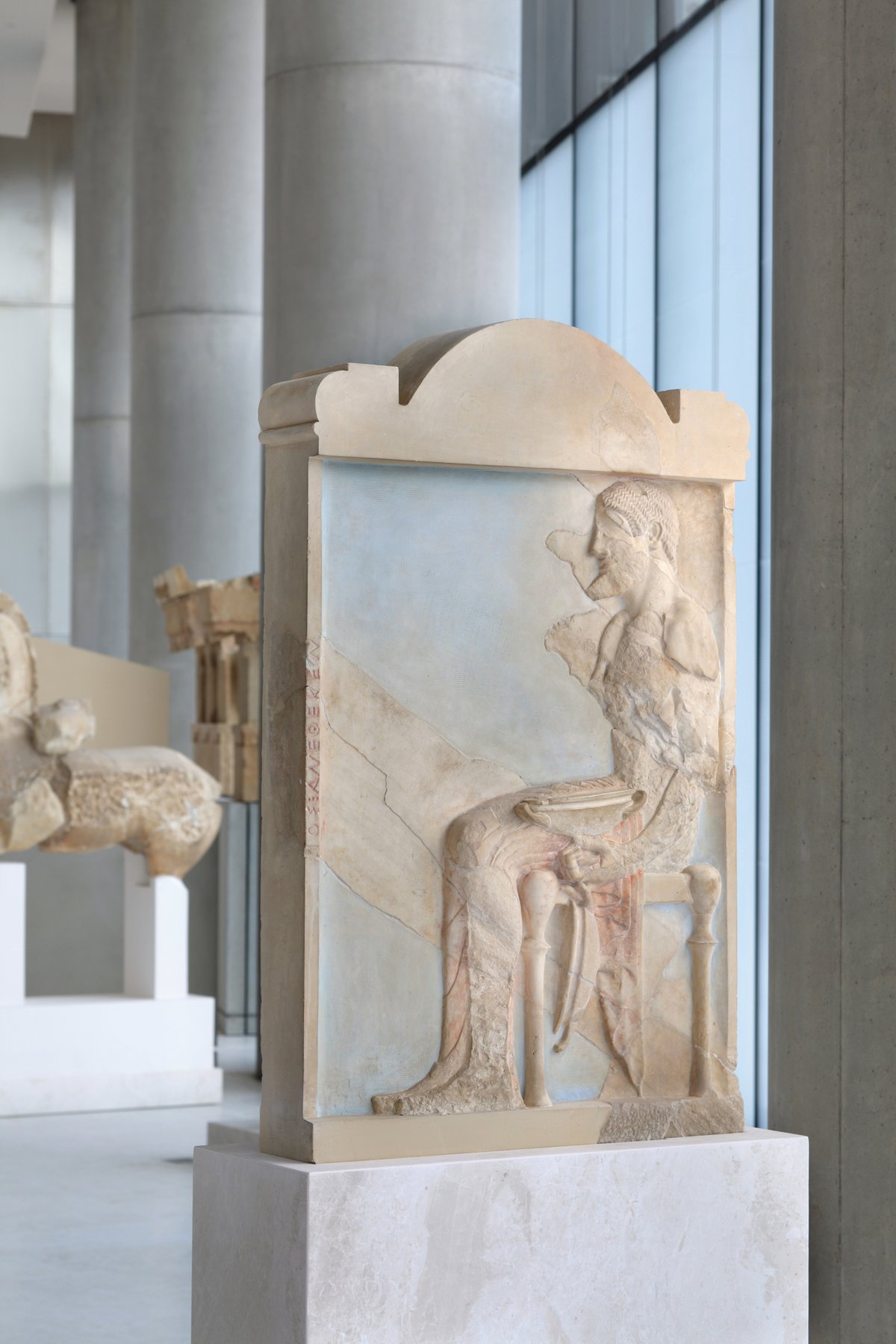“If it’s full of Theory and jargon, put it in the bin”, said the books editor. The trouble with Jeffrey Hurwit’s Artists and Signatures in Ancient Greece is that there is not enough theory, or rather that the theoretical basis for at least some of his analysis is deeply flawed. In the absence, for good reason, of any reference to “vase-painting” in ancient written sources, for example, many beautiful myths have been invented around the supposed careers of the practitioners of the ceramic art. “For good reason” because pottery stood very low indeed in the hierarchy of crafts in ancient Greece. In Athens pots were produced in a disreputable quarter of the city and even decorated vessels fetched very low prices. Very few of these pots bear what have widely come to be believed are “artists’ signatures”—far fewer than 1%. These names have been generally taken at face value to reflect the activities of a community of artists influencing each other, being entertained at aristocratic banquets and even including aristocratic members. This view of the evidence underpins Hurwit’s account.
Plato put matters into perspective in observing that “in every city there are two cities, the rich and the poor”, and it is also the case that whenever a drinking vessel in the hands of an Athenian aristocrat is mentioned, it is always of gold or silver. Athens produced many tons of silver a year, but little Athenian plate has survived in its original form, at least in Greece. Rather more has been discovered of late in Thracian tombs—silverware bearing exquisite decoration in gold-figure—and it is becoming increasingly apparent that such wares lay behind the imitative red-figure decoration on clay pots.
The standards of Greek pottery are high because they were set by the practitioners of another medium. On close examination, the testimonies relating to the supposed signatures of “vase-painters” prove to be full of inconsistencies and contradictions, in particular the same “signatures” on vessels by different hands: three, if not four, Polynotuses, for example (but not mentioned by Hurwit).
The difficulties disappear, however, with the application of a bit of theory. If we were to apply a Renaissance model, where a Holbein or a Giulio Romano might also be employed in designing plate for their patrons, then we can understand the extremely few inscriptions on Greek pots reading “So and so egrapsen” as reflecting the signature of a big-time artist—such as Polygnotus—on a piece of silverware bespoken by a rich customer. For egrapsen can mean “designed” as easily as “drew this”, and the design on a wooden panel or parchment would survive to serve as inspiration for the decoration of pottery; sometimes—but very rarely—inscriptions might be carried over, too.
The fifth-century artist Parrhasius was recorded in antiquity as having collaborated with the metalworker Mys on the creation of a cup of Herculean proportions decorated with a Trojan War scene. “The design (gramma) is by Parrhasius, the work (techne) by Mys” reads the verse inscription. We hear elsewhere of Parrhasius’s designs (graphides) still being used by craftsmen in Roman times. How many more silversmiths’ designs would have been available for the use of craftsmen in other media in fifth-century Athens?
The notion that “vase-painters” hobnobbed with aristocrats is extraordinarily far-fetched and yet it is so entrenched in the relevant scholarship (to use the term loosely) that Hurwit takes it on board without reservation. Plato’s “two cities” come to the rescue here. Pots sold for very little: obols usually, drachmas (one drachma = six obols) occasionally. In aristocratic eyes a drachma was a trifling sum, whereas the rich at Athens conducted business in minae (units of 100 silver drachmas). We hear of gemstones, peacocks, houses, slaves, inheritances or dowries assessed in minae.
Silver vessels were made to weigh round figures in minae and served as large-denomination bank notes. Weight and the purity of the metal were fundamental here, and the presence of craftsmen’s names (or “artists’ signatures”) will have served as a guarantee. Another of Plato’s images comes into play here: the imagery and inscriptions on Athenian pots bear the same relationship to the ancient reality as the shadows on the back wall of his cave. The relatively indestructible (and cheap) pots stand in for the lost vessels on the tables of the rich that were worth their weight in silver.
There is a large literature on these issues but Hurwit has contrived to sideline it. In mitigation, the chapters on “Sculpture”, “Gems”, “Coins”, “Architecture”, “Wall- and Panel-painting” and “Mosaics” are tolerably acceptable. The chapter on “Vases”, however, is certainly for the bin.
• Michael Vickers is the professor emeritus of archaeology at the University of Oxford. He was the curator of Greek and Roman antiquities at the Ashmolean Museum from 1971 to 2010, and co-director of the British-Georgian excavations of a Greek trading post at Pichvnari between 1998 and 2010
Artists and Signatures in Ancient Greece
Jeffrey Hurwit
Cambridge University Press, 237pp, £64.99/$99.99 (hb)


